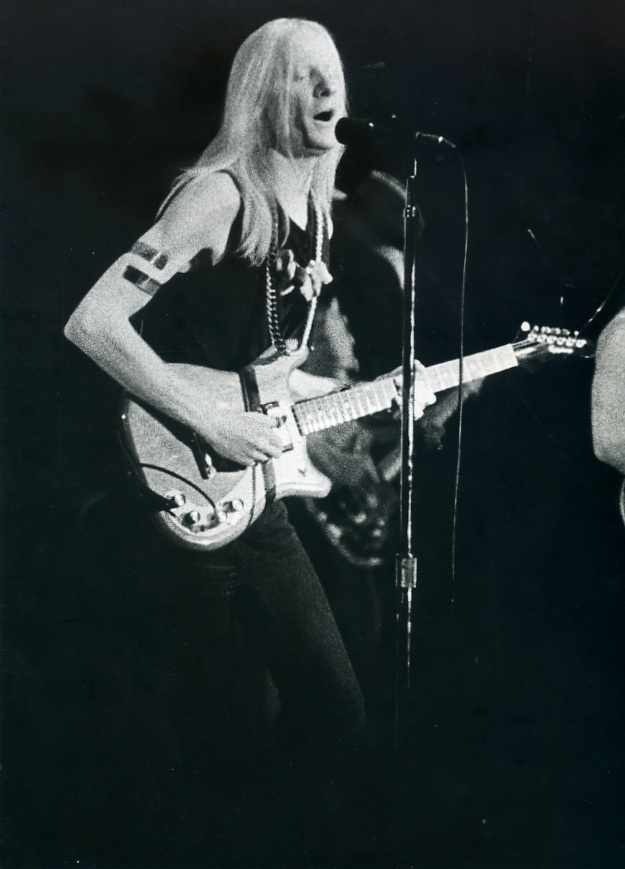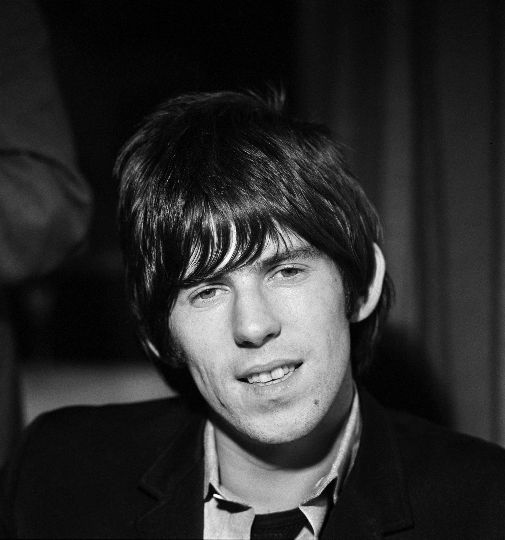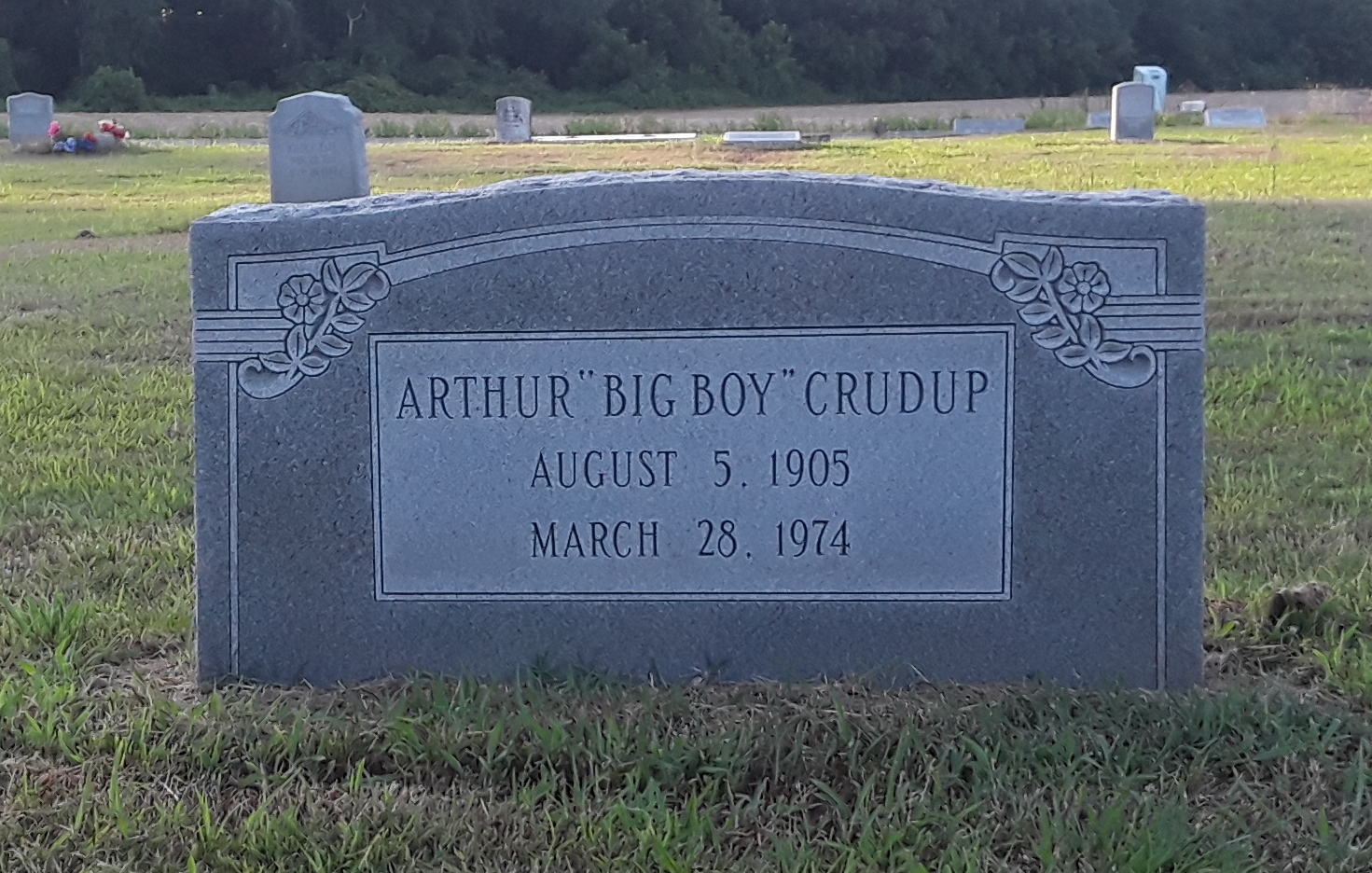|
Still Alive And Well
''Still Alive and Well'' is an album by blues rock guitarist and singer Johnny Winter. It was his fifth studio album, and his first since ''Johnny Winter And'' almost three years earlier. It was released by Columbia Records in 1973. Many of the songs on the album have a more rock-oriented power trio sound, with Randy Jo Hobbs playing bass and Richard Hughes on drums. Rick Derringer, who produced, plays guitar on three tracks. ''Still Alive and Well'' features two Rolling Stones songs — "Silver Train (The Rolling Stones song), Silver Train" and "Let It Bleed (song), Let It Bleed". Critical reception In ''Rolling Stone'', Tony Glover wrote, "Yes, he is. In this long-awaited return album, Johnny Winter takes up where he left off. His fingers are fleet and sure as ever, his vocals have bite and growl, and the flash and power of yore are hanging right in there." On AllMusic, James Chrispell said, "''Still Alive and Well'' proved to the record-buying public that Johnny Winter wa ... [...More Info...] [...Related Items...] OR: [Wikipedia] [Google] [Baidu] |
Johnny Winter
John Dawson Winter III (February 23, 1944 – July 16, 2014) was an American singer and guitarist. Winter was known for his high-energy blues rock albums and live performances in the late 1960s and 1970s. He also produced three Grammy Award-winning albums for blues singer and guitarist Muddy Waters. After his time with Waters, Winter recorded several Grammy-nominated blues albums. In 1988, he was inducted into the Blues Foundation Hall of Fame and in 2003, he was ranked 63rd in ''Rolling Stone'' magazine's list of the " 100 Greatest Guitarists of All Time". Early life Johnny Winter was born in Beaumont, Texas, on February 23, 1944. He and younger brother Edgar (born 1946) were nurtured at an early age by their parents in musical pursuits. Both were born with albinism. Their father, Leland, Mississippi native John Dawson Winter Jr. (1909–2001), was also a musician who played saxophone and guitar and sang at churches, weddings, Kiwanis and Rotary Club gatherings. Johnny and ... [...More Info...] [...Related Items...] OR: [Wikipedia] [Google] [Baidu] |
Penguin Books
Penguin Books is a British publishing, publishing house. It was co-founded in 1935 by Allen Lane with his brothers Richard and John, as a line of the publishers The Bodley Head, only becoming a separate company the following year."About Penguin – company history" , Penguin Books. Penguin revolutionised publishing in the 1930s through its inexpensive paperbacks, sold through Woolworths Group (United Kingdom), Woolworths and other stores for Sixpence (British coin), sixpence, bringing high-quality fiction and non-fiction to the mass market. Its success showed that large audiences existed for serious books. It also affected modern British popular culture significantly through its books concerning politics, the arts, and science. Penguin Books is now an imprint (trade name), imprint of the ... [...More Info...] [...Related Items...] OR: [Wikipedia] [Google] [Baidu] |
Electric Guitar
An electric guitar is a guitar that requires external amplification in order to be heard at typical performance volumes, unlike a standard acoustic guitar (however combinations of the two - a semi-acoustic guitar and an electric acoustic guitar exist). It uses one or more pickups to convert the vibration of its strings into electrical signals, which ultimately are reproduced as sound by loudspeakers. The sound is sometimes shaped or electronically altered to achieve different timbres or tonal qualities on the amplifier settings or the knobs on the guitar from that of an acoustic guitar. Often, this is done through the use of effects such as reverb, distortion and "overdrive"; the latter is considered to be a key element of electric blues guitar music and jazz and rock guitar playing. Invented in 1932, the electric guitar was adopted by jazz guitar players, who wanted to play single-note guitar solos in large big band ensembles. Early proponents of the electric guitar on ... [...More Info...] [...Related Items...] OR: [Wikipedia] [Google] [Baidu] |
Bob Dylan
Bob Dylan (legally Robert Dylan, born Robert Allen Zimmerman, May 24, 1941) is an American singer-songwriter. Often regarded as one of the greatest songwriters of all time, Dylan has been a major figure in popular culture during a career spanning more than 60 years. Much of his most celebrated work dates from the 1960s, when songs such as "Blowin' in the Wind" (1963) and " The Times They Are a-Changin' (1964) became anthems for the civil rights and antiwar movements. His lyrics during this period incorporated a range of political, social, philosophical, and literary influences, defying pop music conventions and appealing to the burgeoning counterculture. Following his self-titled debut album in 1962, which comprised mainly traditional folk songs, Dylan made his breakthrough as a songwriter with the release of ''The Freewheelin' Bob Dylan'' the following year. The album features "Blowin' in the Wind" and the thematically complex " A Hard Rain's a-Gonna Fall". Many of his s ... [...More Info...] [...Related Items...] OR: [Wikipedia] [Google] [Baidu] |
From A Buick 6
"From a Buick 6" is a song by Bob Dylan from his album ''Highway 61 Revisited'', which was also released as a single on the B-side of "Positively 4th Street". It was recorded on July 30, 1965. Musical style The song is a raucous blues song played recklessly by a band that included Al Kooper on organ and Mike Bloomfield on guitar. The guitar part is patterned after older blues riffs by Robert Johnson, Charlie Patton and Big Joe Williams. It also features a backbeat from drummer Bobby Gregg, a bass line from Harvey Brooks, and a soaring harmonica break. The song starts with a snare shot that is similar to the opening song of ''Highway 61 Revisited'', "Like a Rolling Stone". It is essentially a 12-bar blues pattern, played with power chords, and is notable for Brooks' almost indiscernible substitution of an F in the tenth bar of all but the first verses, while the guitar and organ play the G-chord. The song is partially based on Sleepy John Estes' 1930 song "Milk Cow Blues", eve ... [...More Info...] [...Related Items...] OR: [Wikipedia] [Google] [Baidu] |
Little Richard
Richard Wayne Penniman (December 5, 1932 – May 9, 2020), known professionally as Little Richard, was an American musician, singer, and songwriter. He was an influential figure in popular music and culture for seven decades. Described as the " Architect of Rock and Roll", Richard's most celebrated work dates from the mid-1950s, when his charismatic showmanship and dynamic music, characterized by frenetic piano playing, pounding back beat and raspy shouted vocals, laid the foundation for rock and roll. Richard's innovative emotive vocalizations and uptempo rhythmic music also played a key role in the formation of other popular music genres, including soul and funk. He influenced numerous singers and musicians across musical genres from rock to hip hop; his music helped shape rhythm and blues for generations. "Tutti Frutti" (1955), one of Richard's signature songs, became an instant hit, crossing over to the pop charts in both the United States and the United Kingdom. His next ... [...More Info...] [...Related Items...] OR: [Wikipedia] [Google] [Baidu] |
Lucille (Little Richard Song)
"Lucille" is a 1957 rock and roll song originally recorded by American musician Little Richard. Released on Specialty Records in February 1957, the single reached number 1 on the Billboard R&B chart, 21 on the US pop chart, and number 10 on the UK chart. It was composed by Albert Collins (not to be confused with the blues guitarist of the same name) and Little Richard. First pressings of Specialty 78rpm credit Collins as the sole writer. Little Richard bought half of the song's rights while Collins was in Louisiana State Penitentiary. The song foreshadowed the rhythmic feel of 1960s rock music in several ways, including its heavy bassline and slower tempo, inspired by the chugging of a train the band had been riding. The scene-setting sections also feature stop-time breaks and no change in harmony, and it has a darker sound because most of the instruments use a low register. Recording Little Richard sang and played piano on his recording, backed by a band consisting of Lee Allen ... [...More Info...] [...Related Items...] OR: [Wikipedia] [Google] [Baidu] |
Keith Richards
Keith Richards (born 18 December 1943), often referred to during the 1960s and 1970s as "Keith Richard", is an English musician and songwriter who has achieved international fame as the co-founder, guitarist, secondary vocalist, and co-principal songwriter of the Rolling Stones. His Jagger–Richards, songwriting partnership with Mick Jagger is one of the most successful in history. His career spans over six decades, and his guitar playing style has been a trademark of the Rolling Stones throughout the band's career. Richards gained press notoriety for his romantic involvements and illicit drug use, and he was often portrayed as a Counterculture, countercultural figure. Richards was born in and grew up in Dartford, Kent. He studied at the Wilmington Grammar School for Boys, Dartford Technical School and Sidcup Art College. After graduating, Richards befriended Jagger, Bill Wyman, Charlie Watts, and Brian Jones and joined the Rolling Stones. As a member of the Rolling Stones, R ... [...More Info...] [...Related Items...] OR: [Wikipedia] [Google] [Baidu] |
Mick Jagger
Sir Michael Philip Jagger (born 26 July 1943) is an English singer and songwriter who has achieved international fame as the lead vocalist and one of the founder members of the rock band the Rolling Stones. His ongoing songwriting partnership with Keith Richards is one of the most successful in history. Jagger's career has spanned over six decades, and he has been widely described as one of the most popular and influential frontmen in the history of rock music. His distinctive voice and energetic live performances, along with Richards' guitar style, have been the Rolling Stones' trademark throughout the band's career. Jagger gained press notoriety for his romantic involvements and illicit drug use, and was often portrayed as a countercultural figure. Jagger was born and grew up in Dartford. He studied at the London School of Economics before abandoning his studies to join the Rolling Stones. Jagger has written most of the Rolling Stones' songs together with Richards, and the ... [...More Info...] [...Related Items...] OR: [Wikipedia] [Google] [Baidu] |
Dan Hartman
Daniel Earl Hartman (December 8, 1950 – March 22, 1994) was an American rock musician, multi-instrumentalist, singer, and songwriter. Among songs he wrote and recorded were " Free Ride" as a member of the Edgar Winter Group, and the solo hits "Relight My Fire", "Instant Replay", "I Can Dream About You", "We Are the Young" and " Second Nature". "I Can Dream About You", his most successful song, reached No. 6 on the ''Billboard'' Hot 100 in 1984 and No. 12 on the UK Singles Chart in 1985. The James Brown song " Living in America", which Hartman co-wrote and produced, reached No. 4 on March 1, 1986. Hartman co-wrote the 1980 disco song "Love Sensation" recorded by Loleatta Holloway, which has been sampled on numerous records, including the 1989 Black Box track "Ride on Time". Early life Hartman was born on December 8, 1950 to Carl Hartman (1921–2006) and Pauline Angeloff (1925–1999) near Pennsylvania's capital, Harrisburg, in West Hanover Township, Dauphin County. His fath ... [...More Info...] [...Related Items...] OR: [Wikipedia] [Google] [Baidu] |
Arthur Crudup
Arthur William "Big Boy" Crudup (August 24, 1905 – March 28, 1974) was an American Delta blues singer, songwriter and guitarist. He is best known, outside blues circles, for his songs "That's All Right" (1946), "My Baby Left Me" and "So Glad You're Mine", later recorded by Elvis Presley and other artists. Early life Crudup was born on August 24, 1905, in Union Grove, Forest, Mississippi, to a family of migrant workers traveling through the South and Midwest. The family returned to Mississippi in 1926, where he sang gospel music. He had lessons with a local bluesman, whose name was Papa Harvey, and later he was able to play in dance halls and cafes around Forest. Around 1940 he went to Chicago.Arthur Crudup , ''Biography.com''. Retrieved 29 January 2018 Musical career He began his career as a blues sin ...[...More Info...] [...Related Items...] OR: [Wikipedia] [Google] [Baidu] |
Big Bill Broonzy
Big Bill Broonzy (born Lee Conley Bradley; June 26, 1903 – August 14, 1958) was an American blues singer, songwriter, and guitarist. His career began in the 1920s, when he played country music to mostly African American audiences. In the 1930s and 1940s, he navigated a change in style to a more urban blues sound popular with working-class black audiences. In the 1950s, a return to his traditional folk-blues roots made him one of the leading figures of the emerging American folk music revival and an international star. His long and varied career marks him as one of the key figures in the development of blues music in the 20th century. Broonzy copyrighted more than 300 songs, including adaptations of traditional folk songs and original blues songs. As a blues composer, he was unique in writing songs that reflected his rural-to-urban experiences.Barlow, William (1989). ''"Looking Up at Down": The Emergence of Blues Culture''. Temple University Press. pp. 301–303. . Life and ca ... [...More Info...] [...Related Items...] OR: [Wikipedia] [Google] [Baidu] |







